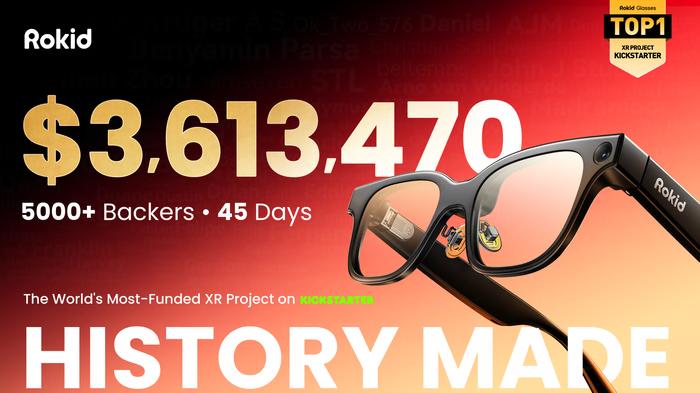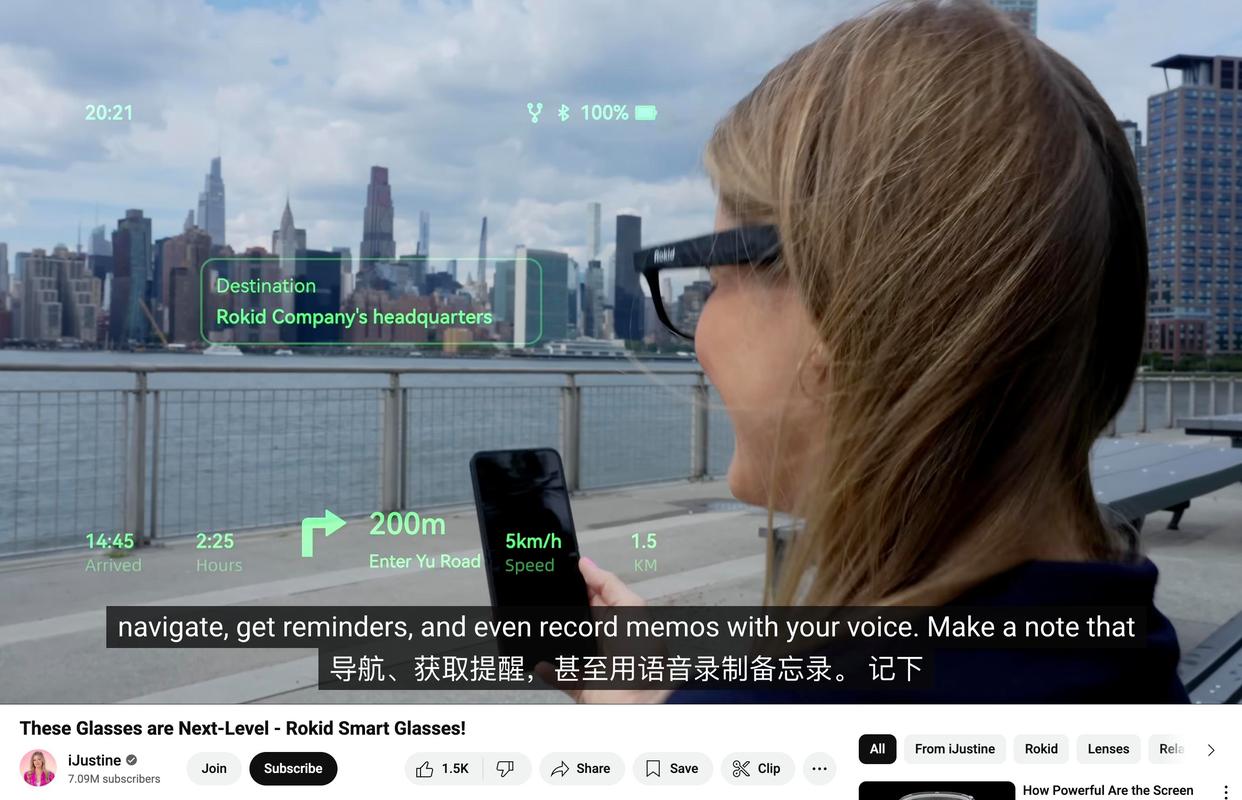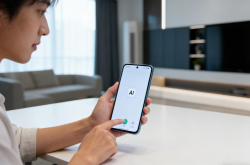Will Smart Glasses Supplant Smartphones? 'Rokid' and Other Contenders Step into the Spotlight
![]() 10/21 2025
10/21 2025
![]() 507
507

By | AI Relative Theory
Kevin Kelly, the founding editor-in-chief of Wired magazine and widely acclaimed as the 'Godfather of the Internet' and 'Tech Prophet,' once made a daring forecast: 'Smart glasses will emerge as the next iPhone. If forced to place a bet, I’d wager on Chinese companies triumphing over Apple.'

Currently, Kelly is deeply engaged with Chinese tech firms. Recently, he paid a visit to Rokid’s headquarters, where he tried out three of their products and repeatedly lauded their design, stating, 'I’m optimistic about smart glasses like Rokid.'

This statement is both electrifying and thought-provoking. Why does Kelly firmly believe that smart glasses will supplant smartphones? And why does he insist that Chinese brands will lead this transformation? The answer lies in the inevitable logic of technological evolution.
Why Will Smartphones Be Supplanted?
Throughout the history of technology, transitions between devices have been constant. To ascertain whether a new product can dethrone an existing one, three core dimensions are crucial: portability, scene integration, and information density.
Laptops supplanted desktops by enhancing productivity through mobility; smartphones succeeded landlines by liberating communication from fixed locations; and smartphones overtook feature phones by evolving from single-purpose tools into all-in-one portals for communication, entertainment, and work.
Today, a similar transformation is unfolding between smartphones and smart glasses. Following a historically validated trajectory, smart glasses are launching a 'revolution from beneath' against smartphones.
Firstly, in terms of portability, smart glasses achieve 'effortless wearability.' Take Rokid’s glasses, for instance, which weigh just 49 grams—equivalent to regular sunglasses and significantly lighter than any smartphone. They free up users’ hands, enabling seamless interaction while walking, carrying items, or operating machinery. Smartphones, in contrast, always occupy a hand or pocket.
Secondly, in scene integration, smart glasses are taking over core high-frequency scenarios traditionally dominated by smartphones. For navigation, arrows and routes are overlaid directly onto real roads, eliminating the need to look down at a phone and thus enhancing safer driving. When communicating with foreigners, real-time translation subtitles appear beside the speaker, avoiding the awkwardness of passing a phone back and forth. At work, they serve as 'script-free aids,' boosting confidence during speeches or presentations.
These experiences are native and seamlessly fused with smart glasses, whereas smartphones interrupt and detach users—requiring them to halt and interact with a glowing screen.
Most critically, smart glasses elevate information density and interaction. Smartphones confine information to a small screen, while smart glasses, through augmented reality (AR), overlay digital content onto the physical world, creating a richer, more intuitive, and instinct-driven information display.

In stark contrast, smartphones possess inherent flaws: their physical screens limit information display; interruptive interactions fragment attention, trapping users in 'digital islands'; and they cannot build the future 'Mirrorworld'—a hybrid space where digital and physical worlds precisely map and overlay, as Kelly described in his book The Inevitable.
These structural weaknesses are why smart glasses will 'usurp' smartphones and become the natural key to this new world.
Why Chinese Startups?
So why does Kelly believe that Chinese companies will win this 'usurpation'?
His insight stems from a profound understanding of the current tech landscape and innovation drivers. While tech giants wield unmatched ecosystems and resources, they often falter during true paradigm shifts. Opportunities favor bolder Chinese startups.
Take Apple, for instance: its iPhone ecosystem is a trillion-dollar moat. Launching a smartphone-replacing smart glass would mean digging its own grave. Thus, Apple’s AR strategy remains cautious and conservative, likely positioning products as 'phone accessories' rather than 'replacements.' For a disruptive product, half-measures equate to non-participation.
Meta, meanwhile, has heavily invested in virtual reality (VR), solidifying its tech path and product mindset in 'immersive virtual experiences.' When the industry consensus shifted to 'AR is the future,' giants struggled to pivot.
For example, Meta recently released its first consumer AR glasses with displays, the Meta Ray-Ban Display, but still uses a single-eye display. By contrast, Rokid and others adopted dual-eye displays. Meta’s CTO, Andrew Bosworth, acknowledged market doubts about skipping dual-eye technology, citing cost, weight, and physiological adaptation trade-offs—highlighting the giants’ difficulty in turning.
Deeper differences lie in strategic focus. Apple’s events emphasize 'ecosystem synergy' (e.g., iPhone-Mac collaboration) over user needs. Meta hypes 'metaverse visions' and trend-driven marketing, excelling at making glasses 'look normal.'
However, 'Rokid' and its peers prioritize user experience. For battery life, early smart glasses lasted 1–2 hours—impractical for daily use. Rokid extended it to 4–6+ hours via chip optimization and dual-core heterogeneous computing. For display, early models struggled with brightness outdoors; Rokid’s self-developed optical engine boosted brightness to 600 nits for clear visibility in sunlight.
Evidently, 'Rokid' and others focus relentlessly on product quality, balancing user pain points and tech integration. Without legacy burdens, they aimed from day one to 'replace smartphones.' This 'user-centric innovation' proves more persuasive than giants’ 'ecosystem gimmicks.'
While giants languish in the 'Innovator’s Dilemma,' unable to self-disrupt, 'Rokid' and peers validate their approach with market success. Their Kickstarter campaign raised $3.61 million, setting a global smart glasses crowdfunding record.

This 'pragmatic yet forward-looking' product philosophy aligns with the market’s ultimate vision for smart glasses: normal-looking on the outside but capable of unlocking new worlds.
From MicroLED to Brain-Computer Fusion: Supplanting Phones Is Just the Start
Zooming out, supplanting smartphones is merely the first step in smart glasses’ journey. Their ultimate form will redefine humanity’s relationship with technology and the world.

In the next 1–3 years, advancements in MicroLED displays and battery life may accelerate smart glasses’ absorption of smartphone functions. Calls, social media feeds, lightweight gaming, and video socializing will shift from phone screens to your field of view. Smart glasses will become primary devices, while phones reduce to compute/communication modules in bags.
In 5–10 years, form factors could radically evolve. We might see soft contact lens-like smart devices offering truly 'device-free' interaction via eye-tracking and biosensing. A seamless, always-on digital layer will blend with reality.
Beyond 10 years, smart glasses may fuse with brain-computer interfaces (BCIs), extending human perception beyond vision. Thought-controlled devices and free-flowing information between virtual and physical realms will redefine human-machine relations. Smart glasses will be the keystone to this 'superhuman' future.
This grand evolution will likely be driven by startups—spiritually tenacious, risk-taking, and user-focused. Like DJI’s rise in drones through relentless tech and product refinement, today’s 'Rokid' and peers tread a similar path, exploring and commercializing 'the future.'
Conclusion
Kevin Kelly’s 'prophecy' may signal an era, marking smart glasses’ transition from hype to tangible product validation and market cultivation.
This revolution stems from humanity’s relentless pursuit of more portable, integrated, and information-rich interactions. Chinese startups lead by breaking free from giants’ ecosystem shackles and path dependencies, embracing bold product-centric strategies that resonate with the market.
The smartphone replacement battle has begun, but it’s merely the prologue to a new era.
*All images sourced from the internet





